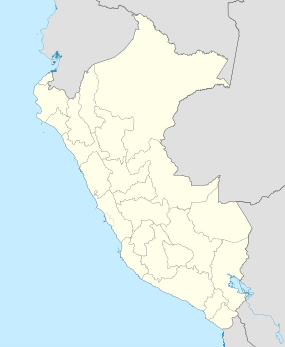Sayhuite
| Saywite | |

The Sayhuite monolith
|
|
| Location | Curahuasi, Abancay Province, Apurímac Region, Peru |
|---|---|
| Region | Andes |
| Coordinates | 13°32′50″S 72°48′10″W / 13.54722°S 72.80278°WCoordinates: 13°32′50″S 72°48′10″W / 13.54722°S 72.80278°W |
| Type | Sanctuary |
Sayhuite (Sigh-weetey) is an archaeological site 47 kilometres (29 mi) east of the city Abancay, about 3 hours away from the city of Cusco, in the province Abancay in the region Apurímac in Peru. The site is regarded as a center of religious worship for Inca people, focusing on water. In the Monuments of the Inca by John Hemming, Hemming points to a colonial narrative that describes the interior of the Sayhuite temple. The temple featured larger columns draped in fabrics with gold bands the "thickness of one's hand." The temple was also under the care of the priestess Asarpay, who jumped to her death in the nearby 400 meter gorge to avoid capture by Spanish forces.
An important feature on the site is the Sayhuite monolith, an enormous rock containing more than 200 geometric and zoomorphic figures, including reptiles, frogs, and felines. Found at the top of a hill named Concacha, the stone was sculpted as a topographical hydraulic model, complete with terraces, ponds, rivers, tunnels, and irrigation channels. The functions or purposes of the stone are not known, but researcher Dr. Arlan Andrews, Sr. believes the monolith was used as a scale model to design, develop, test, and document the water flow for public water projects, and to teach ancient engineers and technicians the concepts and practices required. The rock was "edited" several times, with new material, either altering the paths of the water or adding routes altogether. About two meters long, and four meters wide, the monolith is the most popular attraction on the archaeological site.
While the creators remain a mystery, the monolith provides archaeologists with insight into the culture of the pre-Columbian population. Archaeologists have determined that the site was an Incan religious center, where rituals and ceremonies for the worship of water was conducted. The monolith is an important clue to this, since it depicts a water-like flow between the carvings. Modern-day engineers also speculate that the monolith is a depiction of the irrigation systems present within the Incan culture. While the precise meaning of this stone remains unsolved, the monolith is part of the material culture of the Incan people, and as such helps archaeologists piece together how and why they lived this way. Understanding the Incan culture from an archaeological perspective helps archaeologists apply this knowledge to similar civilizations and find links between ancient cultures.
...
Wikipedia

